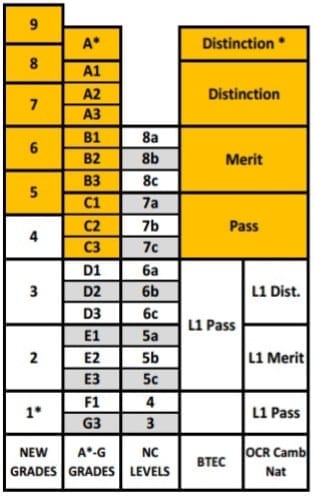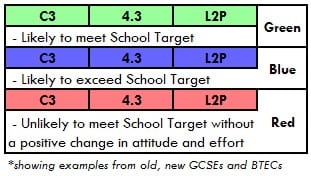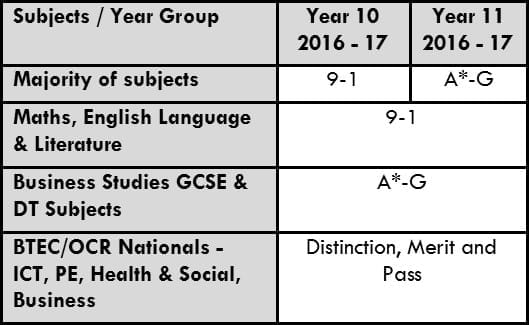It is important to note that the Department for Education (DfE) has removed levels from the Year 7 – 9 curriculum. Therefore we no longer report national curriculum levels to students and parents.
Each student is issued an end of Year 11 School Target and an Aspirational/Transformational Target (see “Where do the target grades come from?”) based upon a combination of their primary school outcomes (SATS) and Cognitive Ability Tests called (CATS), which are taken at the start of Year 7.
Each student’s current attainment and progress towards their end of Year 11 School Target is then categorised into one of three categories:
On:
Your child is currently on-track to achieve their end of Year 11 School Target, based on the skills and knowledge they are presently demonstrating.
Below – Working Towards:
Your child has not yet demonstrated the breadth of skills and knowledge required to be on-track to achieve their target. Your child’s teachers will be able to suggest which skills in particular may need some development or refinement. If your child’s teacher has any major concerns, they will inform you of these directly.
Above:
Your child has demonstrated a range of skills and knowledge that show they have the potential to exceed their School Target and achieve their Aspirational/Transformational Target.
Please note that every child is different and does not follow a standard rate of progress. Children make progress at different rates and may, by nature, have ‘ebbs and flows’ in terms of the progress they make across their secondary school education. Our model is a broad measure of progress. It is possible for students to dip into ‘below – working towards’ or ‘above’, and then find themselves back to ‘on’ as they move through the school.
Please also note that the targets set for our students are very ambitious. We will always aim high for your child. This is what has allowed us to achieve improving results over recent years. We also aim high to ensure that by the time your child reaches Year 10, they are prepared for the increased rigour of the new, more challenging GCSEs that will be fully in place from 2017 onwards for all subjects.
Average Ninja Score (taken during tutor time)
Ninja Maths is a five minute mental numeracy intervention. The test is designed to fill gaps in students’ basic mental calculation strategies; it also empowers them with the skills and fluency required to fully access GCSE Maths concepts when they move to Key Stage 4 study.
Average SPaG Score (taken during tutor time)
SPaG Superheroes is a five minute intervention which is comprised of Spelling, Punctuation and Grammar. This is designed to encourage students to improve and avoid losing marks in their GCSE exams.




